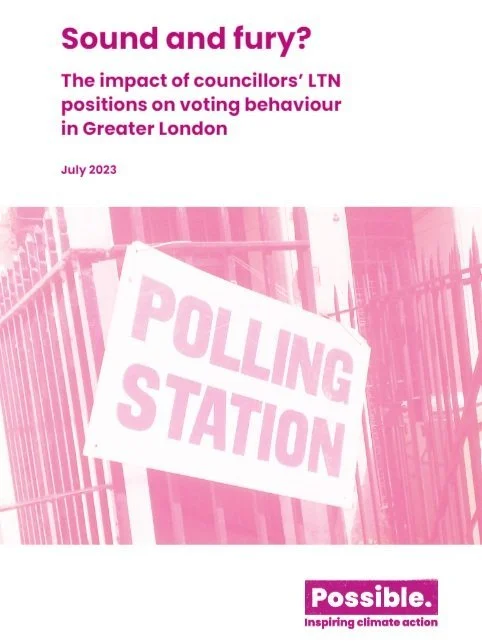Sound and fury? The impact of councillors’ LTN positions on voting behaviour in Greater London
During the Covid-19 pandemic, Low Traffic Neighbourhoods (LTNs) were introduced in urban areas across the country, most notably in Greater London. Their aims were to reduce through traffic in residential areas, whilst creating a more pleasant environment that encourages an uplift in walking, wheeling and cycling.
LTNs have proved controversial. Despite early evidence of benefits, opposition from some residents led to the early removal of some schemes. In May 2022, an article in the Independent estimated that around three in 10 LTNs introduced during the pandemic had been taken out. One motivating factor is likely to have been concerns that controversy about schemes would translate into rejection at the ballot box for councillors.
This report seeks to explore to what extent councillors’ concerns about the potential electoral impact of expressing a view on LTNs are supported by evidence. The analysis in this report confirms that councillors who tweeted, or those who tweeted regularly about LTNs, were not any more or less likely to hold their seat than councillors who did not tweet about LTNs. While there was no effect of tweeting about LTNs on probability of holding a seat, we did find evidence that tweeting about LTNs was associated with a more positive change in relative number of votes compared to not tweeting about LTNs. This suggests there were limited negative, and potential positive effects associated with tweeting about LTNs, irrespective of the sentiment. However, caveats must be considered. For instance, councillors who tweeted more frequently about LTNs may be those who already felt confident of being re-elected or of the popularity of LTNs in their area.

